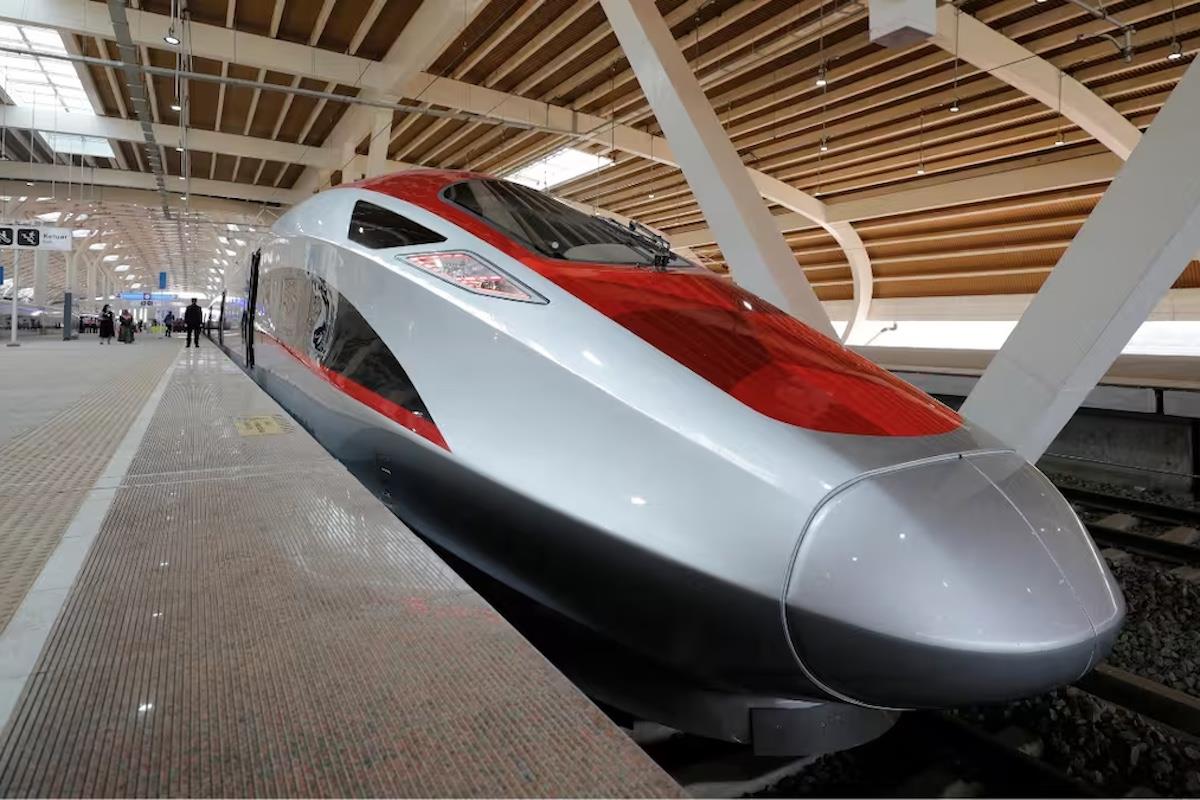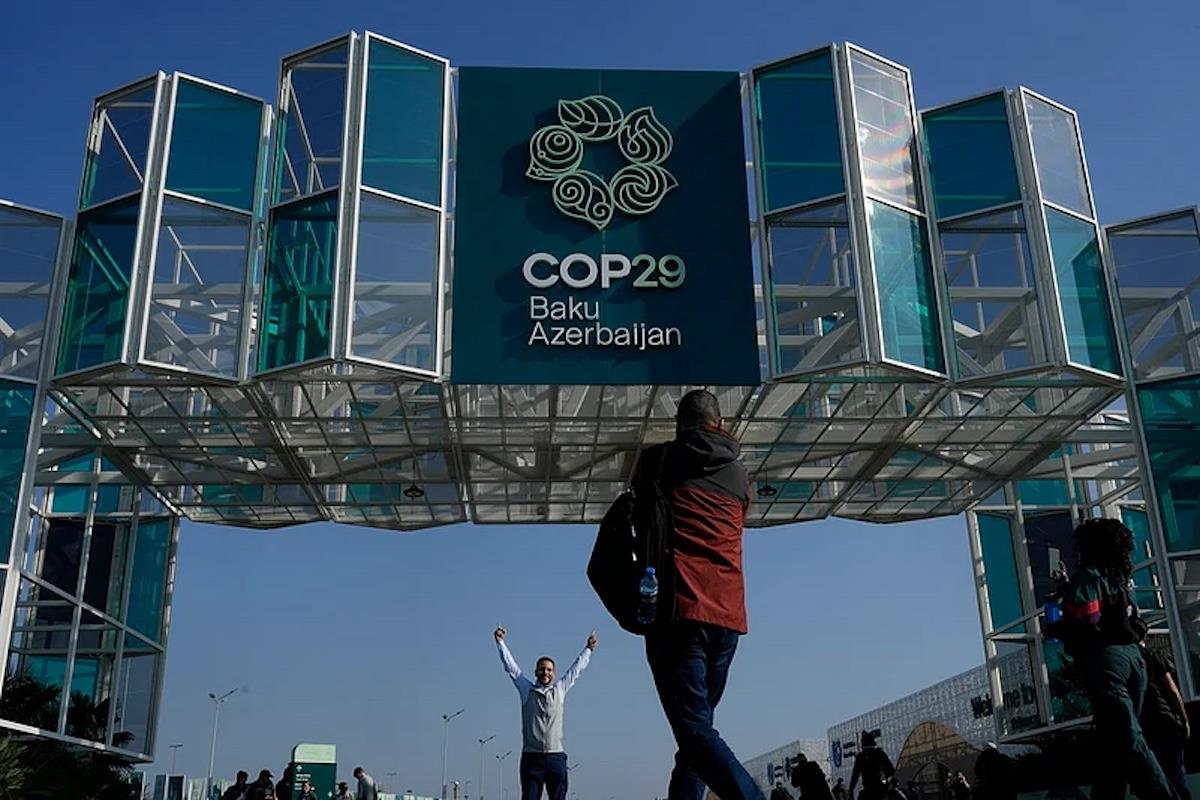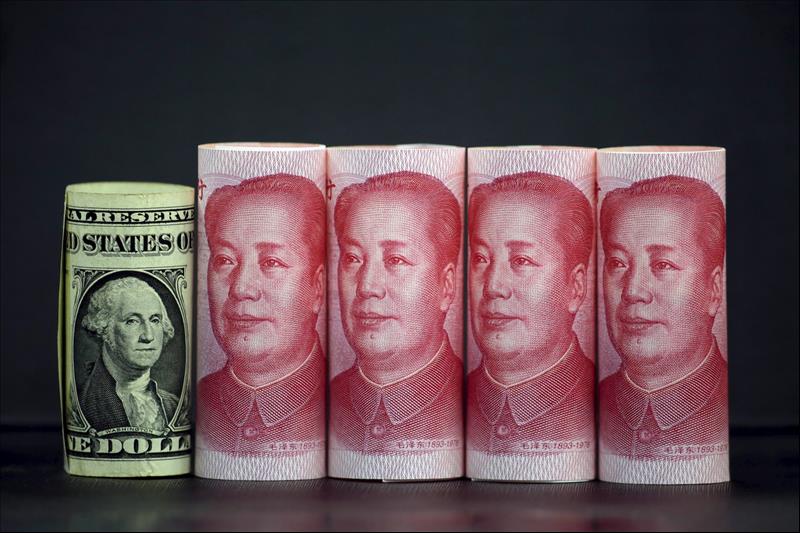
Trump-Xi Truce Won't Save The Dollar From The Yuan
Data from China's State Administration of Foreign Exchange shows that fixed-income assets held by banks outside the country more than doubled over the past decade, jumping to $1.5 trillion, with yuan-denominated assets now at US$484 billion (a quadrupling in just the last five years. That includes $360 billion in loans and deposits, up from just $110 billion in 2020.
This surge comes as Xi Jinping's Communist Party leverages China's status as the world's top creditor to increase the use of the yuan globally. This includes China opening more channels for overseas investors to buy yuan-denominated bonds.
Data from the Bank for International Settlements shows that yuan-denominated lending to borrowers in developing countries increased by $373 billion over the last four years.“The year 2022 marked a turning point away from dollar- and euro-denominated credit and towards renminbi-denominated credit” to such borrowers, the BIS said.
It's all part of Xi's long-term vision of boosting the yuan's role in trade and finance. This is both to increase China's global footprint and push back against US policies China sees as weaponizing the dollar's reserve currency status.
Trade finance is playing a big role in the increase. In September, SWIFT data showed that the yuan's share in global payments had reached 3.17%, up from 2.93% in August.
Though still small relative to the dollar and euro, this marks steady progress in internationalizing the yuan. The Chinese currency is indeed seeing growing adoption in cross-border transactions amid the global economic transition.
As the yuan is gaining prominence, Trump is doing his best to undermine the dollar with tariffs, attacks on the Federal Reserve, and pushing the national debt toward US$38 trillion. Despite Trump's spin about an“amazing” meeting with Xi, doubts abound about his desire to stop hitting the global economy with new waves of tariffs.
This has officials in Beijing quietly and meticulously seizing the moment for a Chinese currency some investors see as ready to fill the void.
To be sure, the dollar is still very much on top. It represents more than 58% of central bank reserves compared with the euro's 20% and the yuan's roughly 2%. Yet behind the scenes, Xi's team is building a vast and multi-layered yuan infrastructure in preparation for a dollar reckoning that Trump appears to welcome.
Latest stories
Whoosh train woes are Indonesia's, not a China debt trap

Much ado about nothing: COP needs a rapid and radical rethink

Taliban's backing of militants threatens its own survival
At the core of the ecosystem Beijing is creating is the Cross-border Interbank Payment System (CIPS), which offers clearing and settlement services for yuan-denominated payments and trade. Last year alone, CIPS saw a 43% year-on-year increase in transactions totaling $24.5 trillion. That marks the third consecutive year during which transaction volumes increased more than 30%.
The PBOC has drafted new rules to expand participation in CIPS globally. China is also working steadily to grow its currency-swap network. Over the last 17 years - since the 2008 Lehman crisis - Beijing launched at least 32 yuan-centric swap arrangements totaling about $632 billion. New Zealand recently signed up for a new five-year yuan exchange arrangement.
Yuan internationalization is getting a boost from offshore institutions authorized to settle Chinese currency transactions locally. Of the 35 yuan-clearing banks operating in 33 jurisdictions - which connect Asia's biggest economy with its trading partners - Bank of China (Hong Kong) Ltd is the largest.
Even so, the yuan also continues to punch below its weight as an $18 trillion behemoth when it comes to its currency. Given the scale of China's output and the even bigger ambitions that Xi brings to the table, it's clear that Beijing's yuan internationalization push needs a Great Leap Forward.
“The international use of the yuan still does not match China's size in the global economy and trade,” said analyst Miao Yanliang at China International Capital Corporation.
One of China's problems is that many global investors are still reluctant to dump the dollar as the linchpin of the global system. Neither central banks nor investment funds nor oil-producing nor commodity-exporting nations seem ready or willing to pivot to an alternative currency.
The yuan, meanwhile, has a different challenge. China's progress toward both implementing financial reforms and addressing cracks in its foundations has been slower than hoped. The most obvious demerit is Beijing's failure to make the yuan fully convertible.
In 2016, the People's Bank of China achieved its goal of having the yuan included in the International Monetary Fund's“special drawing rights” framework, making it the fifth currency to do so. At the time, PBOC officials recognized that outside pressure from the IMF would prompt the Communist Party to accelerate financial reforms.
Unfortunately, China has also been slower than hoped to increase transparency - both at the government level and the private level - and step closer to freeing the PBOC to conduct an independent monetary policy.
The lack of autonomy is evident in the PBOC's reluctance to cut rates. China could arguably benefit from more yuan liquidity flowing into the economy, paired with bold reforms.
With China's property crisis deepening and youth unemployment at record highs, Xi's government needs to step up efforts to boost household spending. And to address plunging real estate prices to stabilize broader confidence.
Unfortunately, Beijing has proven quite adept at boosting its gross domestic product via stimulus, but not so much when it comes to recalibrating its growth engines. And catalyzing a startup boom, increasing productivity and empowering women.
Since then, China's financial system has become less transparent, and the media have become less free to report on official and corporate shenanigans. Xi is steadily imposing Beijing-like opacity in Hong Kong, risking the laissez-faire ethos for which the city is renowned.
Keeping yuan internationalization on track means getting the cart-and-horse dynamic right. In recent years, Xi's team has largely pursued a model that prioritizes size in building credibility in markets. It's been slow, though, to do the heavy lifting on reforms needed to garner trust organically.
This means removing all currency controls and allowing for full convertibility, establishing a more credible credit rating system, and facilitating the dissemination of news and data crucial to China becoming a world-class financial destination.
“On the fundamental level,” notes Morgan Stanley economist Robin Xing,“wider international use of yuan rests on a robust economy and further progress in capital account convertibility.”

Sign up for one of our free newsletters
-
The Daily Report
Start your day right with Asia Times' top stories
AT Weekly Report
A weekly roundup of Asia Times' most-read stories
Lizzi Lee, an economist at the Asia Society, says that“the US dollar benefits from rule-of-law protections, institutional independence, and transparency, while China's financial governance model centers on state control and government intervention in the market. In addition, foreign investors have limited legal recourse in China and face opaque regulatory conditions.
Without“fundamental changes to its legal, institutional, and financial systems,” Lee notes,“China is unlikely to offer the foundational trust that global finance requires.
Matt Gertken, strategist at BCA Research, adds that“China's rule of law is inferior to the US, it does not offer a large and deep pool of liquid assets that is open to foreign investors like the US.” Not, Gertken adds, has Beijing sufficiently addressed geopolitical risks tied to its markets.
Last week, though, the PBOC said China will promote the yuan's internationalization by deepening the two-way opening of financial markets in an orderly manner, expanding the currency's use in trade and accelerating the development of the offshore yuan market.
The announcement, made at the Communist Party Central Committee's plenum, signaled an increased mandate from on high to champion the yuan.
“We anticipated that language on yuan internationalization,” Ding Shuang, economist at Standard Chartered Bank, told Bloomberg.“The PBOC officials have become more outspoken this year about their ambition to promote the yuan as one of the leading global currencies to reduce reliance on the dollar, amid the global search for alternative safe assets.”
Yu Yongding, a former member of the PBOC's monetary policy committee, says that“we've achieved some progress in yuan settlement in recent years. But to make the yuan an international reserve currency, the progress has been too slow.”
Follow William Pesek on X at @WilliamPesek
Sign up here to comment on Asia Times stories Or Sign in to an existing accounThank you for registering!
An account was already registered with this email. Please check your inbox for an authentication link.
-
Click to share on X (Opens in new window)
Click to share on LinkedIn (Opens in new window)
LinkedI
Click to share on Facebook (Opens in new window)
Faceboo
Click to share on WhatsApp (Opens in new window)
WhatsAp
Click to share on Reddit (Opens in new window)
Reddi
Click to email a link to a friend (Opens in new window)
Emai
Click to print (Opens in new window)
Prin

Legal Disclaimer:
MENAFN provides the
information “as is” without warranty of any kind. We do not accept
any responsibility or liability for the accuracy, content, images,
videos, licenses, completeness, legality, or reliability of the information
contained in this article. If you have any complaints or copyright
issues related to this article, kindly contact the provider above.


















Comments
No comment